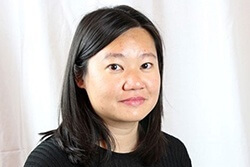SINGAPORE – There’s a lot of talk about getting attribution right in today’s multi-device landscape, but that’s just putting the cart before the horse for many brands, according to Grace Liau, VivaKi’s general manager for Asia Pacific.

Grace Liau, General Manager of Vivaki
In an interview with Campaign Asia-Pacific, she added that in order for marketers to be able to accurately use attribution to track how their marketing efforts are faring, a proper digital foundation must be laid down first.
“But thing is that marketers in Asia don’t want to pay for things like ad serving, which is a basic brick of the digital foundation,” Liau said. “And if you don’t have that foundation, then forget about programmatic. You’re going to jump into programmatic and talk about CTR, why? You’re not buying search. And forget multi-touch attribution too, because that’s a whole different layer.”
According to her, attribution is important, but it’s a part of and not the sum of the digital marketing picture.
Liau added that it’s problematic when marketers say they do not have the right solutions in place, despite being in control of their budgets.
“They tell agencies they don’t want to spend money on adserving or tracking but still want attribution reports,” she said. “It’s a very upside-down relationship at the moment, and I wish the level of partnership was much higher.”
It doesn’t help matters, Liau added, when marketers speak to players such as Google or Facebook and point out that these platforms offer them just that.
“Yes of course they have it, but you don’t want us to put tags down so we can have it for you, and their data is co-mingled with everyone else’s,” she said.
Liau added that in coversations with clients, it’s interesting to discover that while they have no qualms about putting down a Facebook or Google tag, when it comes to putting tags on their sites to find out what’s working—there’s quite a bit of hesitation.
“When you ask to put in a third-party marketing tags, marketers are quite averse,” she said. “Which is interesting considering that with Google and Facebook, you don’t know what they’re doing with the data because it goes to them. Whereas for us, client data is client’s data.”
That being said, the conversation has shifted from when Liau first moved to the region from the United States two years ago.
“When I first got here, everyone was talking about big data and data-management platforms, but there’s less of that now,” she said. “Because any data is not useful if it’s not actionable.”
Liau said that the agency talks to clients about focusing on actionable data and moving away from CTRs as the metric for success, a benchmark that still persists for many advertisers.
While some brands use both CTRs and conversion rates as metrics for success, she pointed out that these two metrics are “opposites” and do not offer a good picture of the situation.
“It’s a long conversation and I think there’s still a lot of evangelising and education that needs to happen in the region,” she added. “But so far it’s been an interesting journey for us.”

Greg Paull, Co-founder and Principal of R3
VivaKi version 2.0
Early this year, the Publicis-owned agency underwent a restructuring exercise in the United States, which comprised a move away from the trading desk model and saw its ad traders, about 120 employees, reassigned out to individual Publicis agencies.
It was a move meant to bring ad tech talent closer to clients, while those remaining at Vivaki focus on training, research and development, data management and analytics.
(This interview was conducted prior to Publicis Groupe’s announcement that it would be restructing its business globally into four distinct hubs to better serve clients. However, it stands to reason that VivaKi would fare quite well post-restructure. In an interview with Campaign, Greg Paull, principal and co-founder of R3, said that marketers are demanding far more integration and the Publicis restructuring appears to be reaction to that. “The group has been talking about the power of Vivaki for several years now, so this is a more formal move in the direction,” he said.)
Liau said that for the Asia operations, following suit with the move away from trading desks was considered, but because the digital advertising scene was still emerging, a more phased approach was adopted.
“So what we’re focused on is more around ‘training wheels’,” she said. “Australia and New Zealand shifted to ‘Version 2’ in April of this year, with all the Vivaki people having been separated into different agencies.”
Liau said that support is still offered, and while handholding was required during the transition phase, on the whole Vivaki’s people have been embraced in their new home agencies.
“So the timetable for the rest of Asia to transition will kick off next year,” she said. “That’s going to be a focus for 2016, getting Version 2 right. I know it sounds small but it’s a lot of big moving parts because we have to change culture, instill knowledge and build confidence in these guys that they can speak about this intelligently.”
This transition will enable VivaKi to refocus its efforts on technology and create better synergies with what Publics agencies are trying to achieve with and for clients.
“As an agency, there was always this ultility layer we focused on, but as you can imagine with any service business, the service side can overun everything else,” she said. “Now we can begin our pivot into being a more product-centric company.”
Liau added that as a whole, most at VivaKi are not looking to stand out and they are also not IT support.
“We’re digital people,” she said. “We just want to get shit done, learn good stuff and advance what we do. It’s not important for us to stand out and grab the glory in that sense. We’re quite happy for agencies to go out front with the client while we provide the support in terms of narrative and answering questions.”
Liau added that the company’s business is a people business, not a machine business, looking at what the technology can do and what insights can be garnered.
“The computer can only give you so much insight, and the algorithms can only move so fast,” she said. “It still needs a lot of human intervention, which surprises many people in the context of programmatic because they think ‘Oh you just hit a button and stuff gets done, easy’. But it’s far from it. It’s still not a perfect system—there is no perfect system—it’s about iteration and improvements.”
Liau added that many marketers are distrustful of agency trading desks, especially given the issues that have been raised around transparency in markets such as Australia.
“So there was this wave of brands who decided to take things inhouse, but you take a good hard look at those operations, you still have agency people pulling the levers,” she said. “Because it is hard work and agencies still want to make money, we’re not going to give away these services for free as it’s a lot of hours and time.”
In addition, Liau said that even tech providers in the space are not prepared to provide that level of service.
“Google learnt this the hard way,” she added. “And at the end of the day they’re tech companies, not services companies. We’re services companies.”
But there is hope on the horizon. When asked what tech advancement she is most excited about, Liau pointed to the developments being made in artificial intelligence (AI).
“AI-driven analysis is still very experimental at this stage, but when it comes through, it will be very exciting,” she said. “Then we can really put pedal to the metal. Because when AI can enable some level of insights, then our people can truly focus on strategy, as right now, we’re asking them to do a lot of time-consuming repeatable tasks.”
Source: Campaign Asia Pacific





